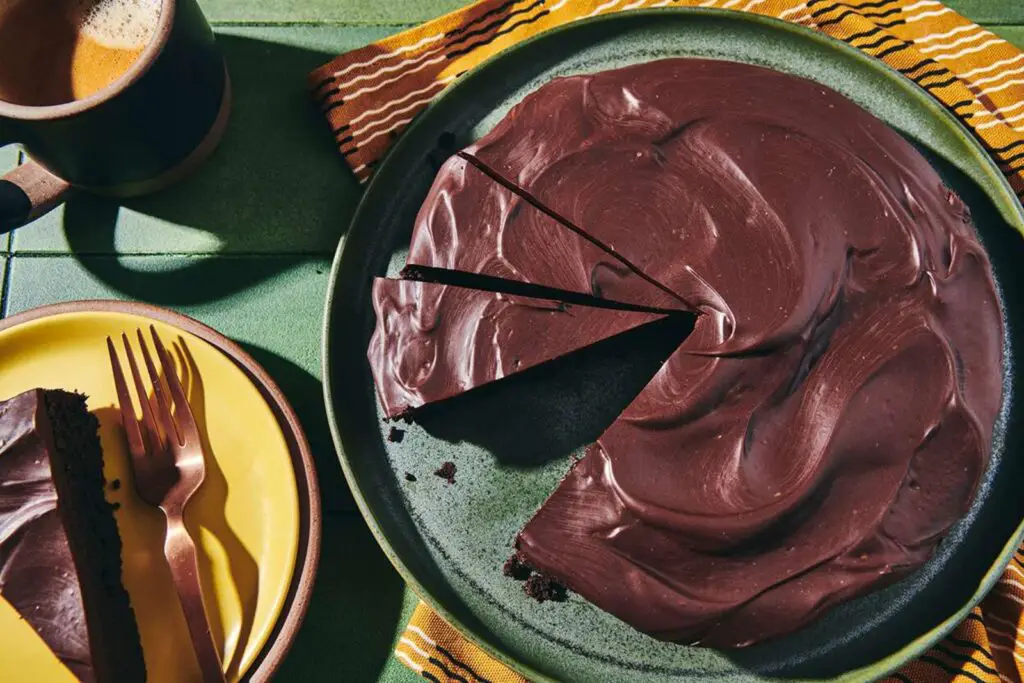
Biryani, a flavorful and fragrant rice dish that is synonymous with indulgence and culinary delight. Biryani is a beloved dish that originated in the Indian subcontinent and has gained immense popularity worldwide for its harmonious blend of spices, tender meat or vegetables, and fragrant basmati rice. This one-pot wonder is a celebration of flavors, with each bite offering a tantalizing combination of spices and textures. Whether it’s the succulent pieces of chicken, tender lamb, or an assortment of vegetables, biryani never fails to impress. If you want to savor the goodness of biryani even when time is limited or have leftovers that you wish to preserve, freezing it is an excellent option. In this guide, we’ll explore the art of freezing biryani, sharing expert tips and techniques to ensure that its flavors and textures are retained, allowing you to enjoy this exquisite dish whenever you desire, whether it’s for a comforting weeknight dinner or a memorable gathering with loved ones.
Here are the simple steps to freeze biryani:
Step 1: Prepare the Biryani
When it comes to freezing biryani, the first and most important step is to begin with a freshly cooked and well-seasoned batch. The quality of your biryani before freezing will directly impact its taste and texture when thawed and reheated. Follow these guidelines to ensure your biryani freezes beautifully:
- Choose a Recipe: Select your preferred biryani recipe, whether it’s vegetable biryani, chicken biryani, or any other variation. Different recipes may have specific ingredients and cooking methods, so follow the recipe closely to achieve the desired flavors.
- Flavor Development: To create a rich and aromatic biryani, it’s crucial to sauté the spices and onions properly. This step helps release their flavors and adds depth to the dish. Take your time to cook the spices until they become fragrant, allowing them to infuse into the rice and other ingredients.
- Rice Perfection: The quality of the rice in your biryani is paramount. Ensure that the rice is cooked to perfection—each grain should be separate and tender. Overcooking the rice can result in a mushy texture, which may not be desirable once the biryani is reheated. Follow the recommended cooking time and water-to-rice ratio specified in your recipe.
- Balanced Seasoning: Achieving a well-balanced seasoning is crucial to a flavorful biryani. Taste the biryani as you season it and adjust the salt, spices, and other seasonings to suit your preference. Keep in mind that freezing can slightly dull the flavors, so it’s advisable to season the biryani slightly more than you would for immediate consumption.
- Incorporation of Ingredients: Ensure that all the ingredients are thoroughly incorporated into the biryani. This includes evenly distributing the spices, vegetables, meat, and any other components. This step guarantees that every spoonful of biryani will offer a delightful combination of flavors.
By starting with a freshly cooked and properly seasoned batch of biryani, you lay the foundation for a delicious frozen dish. The careful preparation of the biryani ensures that its flavors are well-developed and balanced. This step is essential for maintaining the quality and taste of the biryani even after it has been frozen and reheated.
Step 2: Portion the Biryani
After preparing your biryani, the next step in successfully freezing it is to portion it before storing. Here’s a breakdown of how to effectively portion and package your biryani:
- Individual or Family-sized Portions: Consider your needs and preferences when deciding on portion sizes. You can divide the biryani into individual servings or create larger portions for your family. Individual portions are convenient for quick meals, while family-sized portions are suitable for sharing or larger gatherings.
- Airtight Containers or Freezer-Safe Bags: Choose the appropriate storage containers or bags for freezing your biryani. Opt for airtight containers that are specifically designed for freezer use, as they help maintain the quality of the biryani and prevent freezer burn. Alternatively, freezer-safe bags are also suitable for packaging biryani. Make sure the bags are sturdy, leak-proof, and properly sealed.
- Proper Sealing: Ensure that the containers or bags are tightly sealed to prevent air and moisture from entering. This helps preserve the freshness and flavors of the biryani during freezing. Proper sealing also prevents any potential cross-contamination with other foods in the freezer.
- Labeling: It’s essential to label the containers or bags with the date of preparation. This allows you to keep track of the freshness of the biryani and ensures that you consume it within a reasonable time frame. Use adhesive labels or write directly on the containers with a permanent marker to clearly indicate the date.
By portioning the biryani before freezing, you make the process of defrosting and reheating more convenient. Individual or family-sized portions thaw more quickly and can be reheated as needed. Packaging the biryani in airtight containers or freezer-safe bags and labeling them with the date of preparation helps maintain its quality and allows for easy identification in the freezer.
Step 3: Cool the Biryani
One crucial step in freezing biryani is to ensure that it cools completely before being placed in the freezer. Here’s why cooling is essential and the recommended method for doing so:
- Avoid Freezer Burn: Placing hot or warm biryani directly into the freezer can lead to freezer burn. Freezer burn occurs when moisture in the food turns into ice crystals on the surface, causing dryness and affecting the taste and quality of the dish. By cooling the biryani properly, you reduce the risk of freezer burn and preserve its flavors.
- Cooling in the Refrigerator: The best method to cool the biryani is to transfer it to the refrigerator first. Allow the biryani to sit in the refrigerator, uncovered or loosely covered, until it reaches room temperature. This gradual cooling process helps prevent the growth of bacteria and maintains the integrity of the dish.
- Room Temperature Cooling: If you’re short on time and cannot wait for the biryani to cool in the refrigerator, you can let it cool at room temperature. However, ensure that the room is well-ventilated to promote faster cooling. Stir the biryani occasionally to help dissipate heat and encourage even cooling.
- Avoid Steam Build-up: During the cooling process, it’s important to avoid covering the biryani tightly. Covering the biryani while it’s still hot can create steam, which can lead to condensation and make the dish excessively moist. Allowing the biryani to cool uncovered or with a loose cover helps prevent moisture buildup.
Once the biryani has cooled completely, it’s ready to be transferred to the freezer for long-term storage. Cooling the biryani properly before freezing ensures that its taste, texture, and quality are preserved. By following this step, you minimize the risk of freezer burn and maintain the overall integrity of the dish.
Step 4: Pack for Freezing
Proper packaging is key to protecting the biryani from freezer burn and preserving its taste and quality. Here’s how you can pack your biryani for freezing:
- Airtight Containers: If you’re using airtight containers, select ones that are specifically designed for freezer use. Transfer the cooled biryani into the containers, leaving some headspace at the top. This headspace allows room for the biryani to expand as it freezes. It’s important to tightly seal the containers to prevent air and moisture from entering, ensuring optimal preservation.
- Freezer-Safe Bags: If you prefer to use freezer-safe bags, place the cooled biryani into the bags. Before sealing, squeeze out as much excess air as possible. This minimizes the risk of freezer burn and helps maintain the quality of the biryani. To create compact packages, flatten the bags by gently pressing out the air. This also facilitates quicker freezing and defrosting later on.
- Proper Sealing: Whether using containers or bags, make sure they are tightly sealed. Check for any leaks or gaps in the seals to prevent air and moisture from entering. This step is crucial in maintaining the flavor and texture of the biryani during freezing.
- Labeling: It’s important to label the containers or bags with the date of freezing. This helps you keep track of the storage time and ensures that you consume the biryani within a recommended timeframe for optimal taste and quality.
By properly packing the biryani for freezing, you protect it from freezer burn and maintain its delicious flavors. Leaving headspace in airtight containers and removing excess air from freezer bags prevent moisture accumulation and maintain the integrity of the biryani during freezing and thawing. Labeling the packaging allows for easy identification and ensures that you consume the biryani within the desired timeframe.
Step 5: Freeze with Care
Now that you have packed the biryani for freezing, it’s time to store it in the freezer. Follow these guidelines to ensure proper freezing and storage:
- Choose the Coldest Part: Locate the coldest part of your freezer, typically the back or bottom shelf. This area maintains a more consistent temperature, which is crucial for freezing the biryani evenly and preserving its quality. Avoid placing the biryani near the freezer door or in the front, as these areas may experience temperature fluctuations when the freezer is opened frequently.
- Adequate Airflow: It’s important not to overcrowd the freezer. Leave enough space around the packaged biryani to allow for proper airflow. Overcrowding can restrict the circulation of cold air, leading to uneven freezing and potentially affecting the quality of the biryani. Maintain a clear space around the biryani to ensure optimal freezing conditions.
- Flavor Contamination: Store the biryani away from strongly scented items in the freezer. Biryani can absorb odors easily, so it’s essential to prevent any flavor contamination. Keep it away from foods with strong aromas or pungent ingredients to maintain the authentic flavors of the biryani.
- Freezing Time: The time it takes for biryani to freeze completely depends on various factors such as the quantity and thickness of the portions. It’s generally recommended to leave the biryani in the freezer for a minimum of 2-4 hours, or until it is fully frozen. You can perform a quick check by gently pressing the packaging to ensure it is firm and solid throughout.
By freezing the biryani in the coldest part of the freezer, ensuring adequate airflow, and storing it away from strongly scented items, you create optimal conditions for freezing and preserving the flavors of the biryani. Taking care during the freezing process sets the stage for a delicious and satisfying meal when you’re ready to thaw and reheat the biryani.
How long can biryani last in the freezer?
Biryani can last in the freezer for up to 3 months without significant loss of quality. Properly stored and sealed, biryani can maintain its taste, texture, and flavors during this time. However, for the best quality, it is recommended to consume the frozen biryani within 1 to 2 months.
Step 6: Thaw and Reheat
After freezing your biryani, when the time comes to enjoy it, it’s crucial to thaw and reheat it properly to maintain its taste and texture. Follow these steps for optimal results:
- Thawing in the Refrigerator: Remove the desired portion of frozen biryani from the freezer and transfer it to the refrigerator. Thaw the biryani overnight or for approximately 8-12 hours, depending on the portion size. Thawing in the refrigerator allows for slow and even thawing, minimizing the risk of bacteria growth and maintaining the integrity of the dish.
- Reheating on the Stovetop or Microwave: Once the biryani is fully thawed, it’s time to reheat it. For stovetop reheating, transfer the thawed biryani to a covered pan or skillet. Add a splash of water or broth to prevent dryness and gently stir to distribute the moisture. Heat the biryani over medium-low heat, stirring occasionally to ensure even reheating. This method allows the flavors to meld and the biryani to regain its desired texture.
Alternatively, you can reheat the thawed biryani in a covered microwave-safe dish. Add a splash of water or broth to maintain moisture, cover the dish with a microwave-safe lid or microwave-safe wrap, and heat in short intervals. Stir the biryani occasionally during reheating to ensure even heat distribution.
- Check for Desired Temperature: Continuously monitor the temperature of the reheated biryani. Ensure that it reaches an internal temperature of at least 165°F (74°C) to guarantee food safety. This step is especially important when reheating meat or chicken biryani to ensure that it is thoroughly heated.
- Stirring and Fluffing: While reheating, stir the biryani occasionally to prevent any sticking or clumping. Gently fluff the rice with a fork or spoon to restore its texture and separate the grains.
By thawing and reheating your frozen biryani properly. Thawing in the refrigerator allows for safe and even thawing, while reheating on the stovetop or in the microwave ensures that the flavors are preserved and the biryani is heated throughout. Enjoy your flavorful biryani once it is properly reheated and ready to serve!
Other related questions
Can you refreeze biryani?
Refreezing biryani is not recommended as it can compromise the quality and safety of the dish. When food is thawed, bacteria can multiply, and refreezing can lead to further bacterial growth. Additionally, the texture and taste of the biryani may suffer from repeated freezing and thawing cycles. It is best to thaw and consume the desired portion of biryani without refreezing to ensure optimal freshness and flavor.
How do I know if the biryani has gone bad after being frozen?
After being frozen, there are certain signs to look for to determine if biryani has gone bad. Check for any noticeable changes in color, texture, or smell. If the biryani appears discolored, has a strange texture, or emits a sour or off-putting odor, it may be an indication that it has spoiled. It is crucial to prioritize food safety and discard the biryani if there are any doubts about its quality or freshness.
Can I freeze different types of biryani, like chicken biryani or vegetable biryani?
Yes, you can freeze different types of biryani, including chicken biryani or vegetable biryani. The process of freezing remains the same regardless of the type of biryani. However, it’s important to ensure that the biryani is properly cooked and seasoned before freezing to maintain its flavors. Portioning and packaging the different types of biryani separately can help in easy retrieval and reheating.
Can I freeze leftover biryani from a restaurant or takeout?
Leftover biryani from a restaurant or takeout can be frozen, but it’s important to consider a few factors. Ensure that the biryani is freshly prepared and hasn’t been left at room temperature for an extended period. Transfer the leftover biryani to airtight containers or freezer-safe bags, portioned appropriately for individual servings. Freezing can affect the texture of the rice, but it is still possible to enjoy the flavors of restaurant or takeout biryani when properly stored and reheated.
Can I freeze biryani with yogurt or cream-based sauces?
Freezing biryani with yogurt or cream-based sauces is possible, but it may affect the texture and consistency of the sauce upon thawing and reheating. Yogurt can separate and become watery, while cream-based sauces may experience some changes in texture. It’s recommended to slightly reduce the amount of yogurt or cream in the biryani before freezing to minimize these effects. Proper packaging and careful reheating can help retain the flavors and overall quality of the dish.








